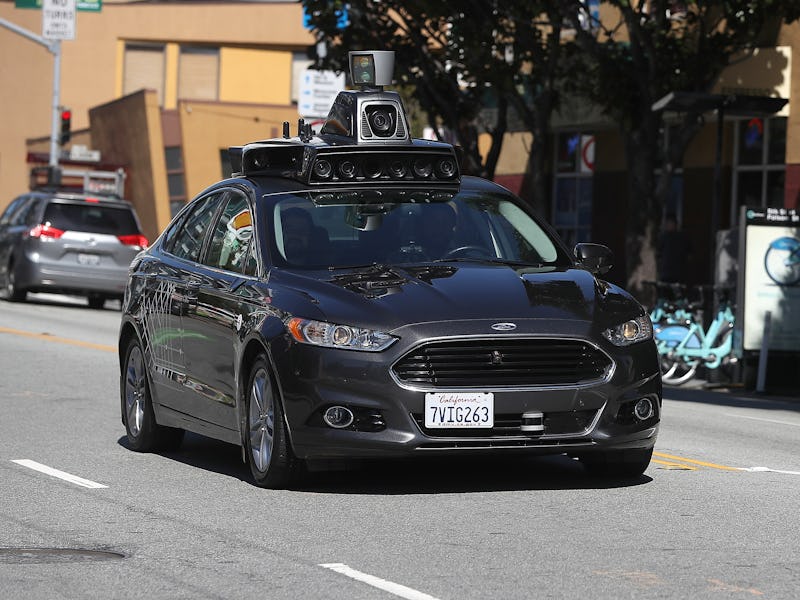What Trump's Pushback on Talking Cars Means for the Self-Driving Future
Vehicle-to-vehicle communication could save countless lives.

An Obama-era proposed policy to have cars communicate has reportedly been halted by the Trump Administration.
With vehicle-to-vehicle (V2V) technology, automakers were hoping to have all new vehicles — especially driverless ones — communicate with each other to prevent crashes and human deaths.
The idea of V2V is that vehicles share with one another infomation on their location, speed, direction as often as 10 times per second. All that pooled knowledge could potentially prevent countless daily crashes. While such tech could benefit all cars, it’s particularly crucial to the success of future self-driving technology.
“V2V is a much smoother, much more human-like ride,” Glen De Vos, CFO of AV systems provider Delphi, said in a September interview with Bloomberg.
While The White House hasn’t yet commented on its apparent decision, the proposal has been reportedly taken off of the White House Office of Management and Budget’s list of “regulations actively under consideration and instead has been relegated to its long-term agenda.”
Beyond the Trump administration’s general antipathy toward industrial regulations, the move may be in response to years of lobbying from the telecommunications industry. The government set aside the 5.9 GHz spectrum nearly 20 years ago for V2V, and it remains unused. Internet service providers in need of more bandwidth have long sought access to this spectrum.
Automotive experts argue V2V must be in not just some, but all self-driving cars to ensure the smooth and safe operation of autonomous cars. This is why the industry is worried the lack of government policy means V2V won’t make it onto mass-market cars.
“Unless it gets mandated, nobody is going to put it on their cars,” said De Vos. “As we meet with regulators, we continue to pound the drum and tell them these early-warning systems in V2V communications have huge safety benefits.”
Case in point: Ford Motor is foregoing adding on the $350 system until it’s required to.
As of now, it’s up to individual driverless vehicle makers to include V2V technology on their own. But with upcoming mass transit driverless initiatives underway, the concern for the safety of riders in non-connected cars is high.